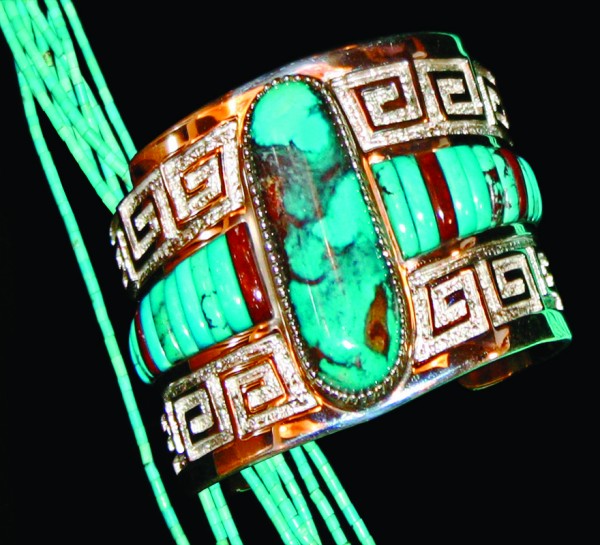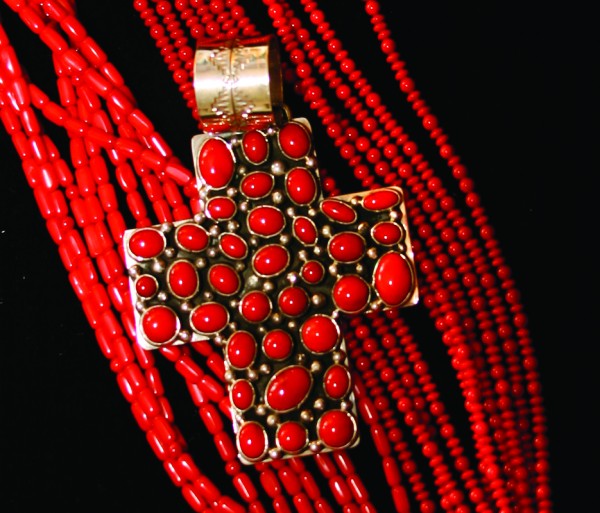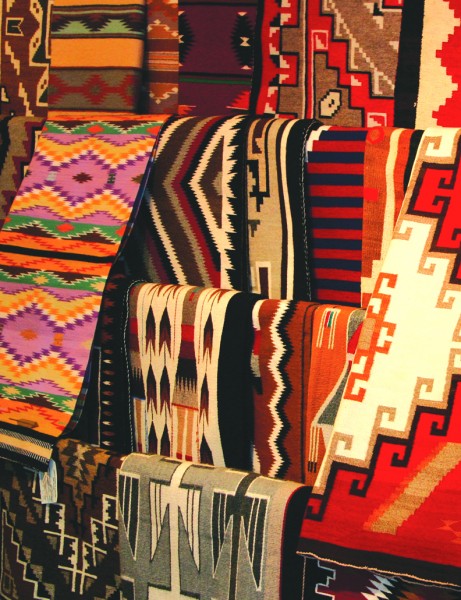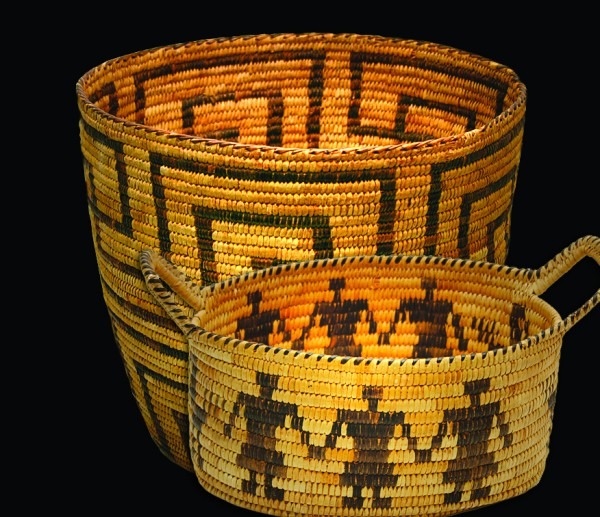Trading Posts
a timeless western tradition
Story and photography by Kathryn R. Burke
TRADING POSTS ARE AN OLD and respected tradition in the American west. Originally, they were a means for native peoples to trade the bounty of their hunts for supplies and materials they could not kill, catch, or make themselves. They were primitive outposts, manned by white men and frequented by Indian hunters and their “squaws” (some of whom belonged to the traders rather than the braves).

 Indian Jewelry:
Indian Jewelry:
Tommy Jackson bracelet, silver, gold, turquoise and turquoise beads;
Rocky Gorman cross and beads, blood coral.
But like all things subject to “growth” and defined by “civilization,” the posts soon evolved into more sophisticated and increasingly complex operations. The supply of trade goods multiplied—on both sides. Traders traded more cookware and household utensils, flour, sugar, whiskey, and bullets for skins, hides, meat, and then art and personal items.
These latter were often “pawned,” or held by the trader as collateral until their owner could redeem them. Native customers pawned jewelry, saddles, rifles, and other personal possessions, which the traders then sold “over the counter” when the pawn could not be redeemed.
This became a lucrative operation for all concerned, especially when the retail items were “Indian Arts & Crafts,” a term generally comprising hand-crafted jewelry and wool rugs,
although it also encompasses baskets, pottery, “folk art” and other Native-made items.


 Left and center: Navajo rugs, from early 1900s to present; Antique Navajo baskets, both at Ivory Trading & Gallery, Ouray, Colo..
Left and center: Navajo rugs, from early 1900s to present; Antique Navajo baskets, both at Ivory Trading & Gallery, Ouray, Colo..
Right: Mueum-quality contemorary pottery, Sunrise Southwest, Ridgway, Colo.
Although Indian Arts and Crafts became a common commodity throughout the west (US, Canada and Mexico), the Navajo or “Dineh” (the people) soon became the star of the show.
Influenced by Spanish design, and with a ready supply of silver and gold, semi-precious stones—especially turquoise and coral— and native sheep, the Navajo turned out the majority of hand-crafted jewelry and wool rugs.
Prolific jewelers and weavers, they still do, although some jewelry and much of the pottery and sculpture comes from other peoples, especially those native to New Mexico.
Few true trading posts are left now, although a few do survive, mainly near Gallup, New Mexico, and these still accept pawn and trade directly with native peoples.
Most “trading posts” or “trading companies,” today are strictly retail operations, many of them with a gallery-like appearance and feeling. They trade straight across the counter, selling direct to the general public. Much of their merchandise is purchased “at market” although the more authentic of today’s “traders” occasionally buy directly from the artists, or even commission their work. Some even subsidize the artists they buy from. The best of these gallery-type establishments* offer an excellent and exquisite inventory of native-made Indian Arts & Crafts, including jewelry, rugs, pottery, baskets, sculpture, and “folk art.” These places are mostly found in the American and Canadian west.
 – Kachina at Storyteller Indian Store, Silverton, Colo.
– Kachina at Storyteller Indian Store, Silverton, Colo.
As the supply becomes scare, the older, authentic pieces of museum-quality Indian Arts and Crafts have become quite valuable. Newer, contemporary work by talented artists and artisans, often from many generations of the same family, is also becoming increasingly collectible.
Not all work is authentic however. A good many jewelry pieces and rugs now come from the Mid-east and Asia, where it can be made cheaply and sold for a high profit. If you’re in the market for the real deal, check the provenance of the piece before you fork over your cash!
Also, be aware that not all so-called trading posts and trading companies are dealers in authentic Indian Arts and Crafts. Many of these, found mostly in tourism areas throughout the US and Canada, are little more than souvenir stores. Their inventory is mostly tee shirts and trinkets, although they may carry a few pieces of “Indian” jewelry, some authentic, most not.
*Authentic Native American Arts & Crafts. Silverton: Storyteller Indian Store, Little Cate’s Silver Shop, Ortega’s Trading, Silverton Trading. Ouray: Ivory’s Trading & Gallery. Ridgway: Sunrise Southwest. Durango: Sorrel Sky, Toh-a-tin.
